Country Participation in the Korean War
The 22 countries which participated in the Korean War are colored gold. Explore their contributions, and view interviews from their veterans by selecting each country.
Australia
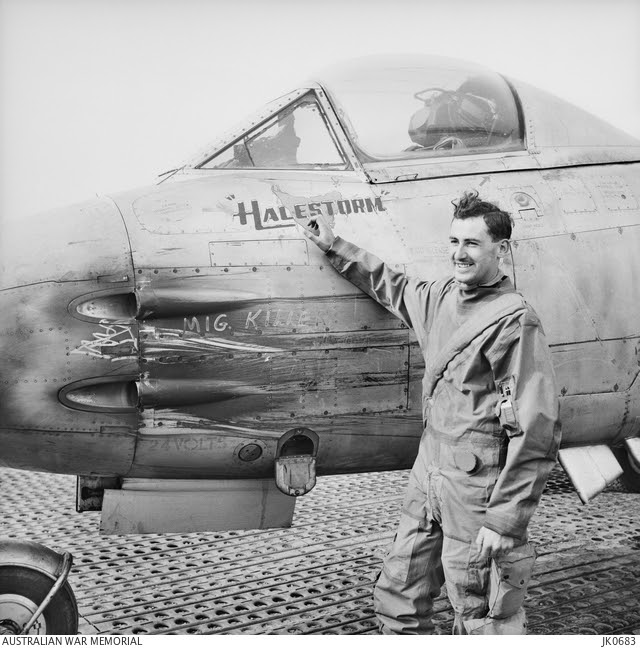
Australia participated in the Korean War as part of the United Nations Command and was one of the primary contributors of troops and supplies during the Korean War, entering the fray in the first week of North Korea invading South Korea. Over 17,000 Australians served in the Army, Navy, or Airforce over the duration of the war from September 1950 to February 1954. Australians proved invaluable at the Battles of Kapyong and Maryang San. Maryan San was part of Operation Commando that solidified the stalemate portion of the Korean War. An underestimated part of the Australian participation was the neutral diplomatic and policy leaders in tandem with the United States, China, and the USSR.
Major Battles
Battle of Kimhwa Jatgol (1953. 2. 26~4. 21), Battle of Bakceon (1950. 11. 4~6), Battle of Maryang Mt. (1951. 10. 3~8), Battle of Sariwo
Service Personnel
17,000
Featured Interviews from Australia
Belgium
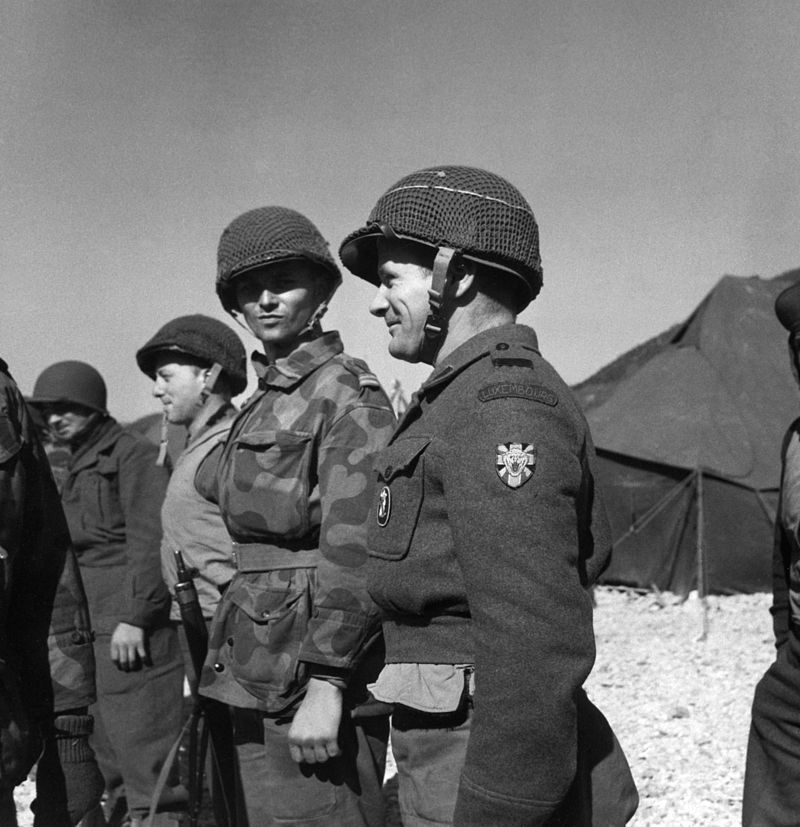
The 1st Belgian Battalion arrived in December 1950 and was attached to the 3rd US Infantry Division in January 1951. It was replaced by the 2nd Belgian Battalion in August 1951. The 2nd Belgium Battalion remained in Korea until June 1955. During the offensive in February 1951, the Belgian Battalion secured the Mt. Gumgul stronghold and blocked the Chinese forces advance for two days, which enabled the 29th British Brigade to withdraw safely to the rear area without suffering heavy casualties. Because of such an outstanding battle at the Mt. Gumgul stronghold, the Belgian-Luxembourg Battalion was awarded official commendations from the US President and the Belgian Minister of Defense.
Major Battles
Battle of Geumgul Mt. (Wet of Jeonkok 6km ; 1951. 4. 22~25), Battle of Hakdang-ri (Hill 388, 1951. 10. 11~13), Battle of Kimhwa Jatgol (1953. 2. 26~4. 21)
Service Personnel
3,172
Featured Interviews from Belgium
Canada

Five days after the war broke out, the House of the Commons of the Canadian government came to an unanimous agreement on helping Korea, saying that it would give full support to any of the Canadian government’s measures taken. In mid-February 1951, the 2nd Battalion(PPCLI) was the first unit committed to Korea, and upon arrival in Korea, the battalion was engaged in war as part of the 27th Commonwealth Brigade. The 25th Canadian Infantry Brigade sailed for Korea in April 1951 and came into the line towards the end of May. Upon arrival in Korea, the 25th Brigade was deployed as a unit of the newly established 1st Division of the British Commonwealth. The 2nd Battalion of the Canadian forces played a significant role in blocking the Chinese attack at the battle of Kapyong, demonstrating its excellent combat capabilities and its strong will to fight.
Major Battles
Battle of Kapyong (1951. 4. 23~25), Battle of Gowang Mt. (1952. 10. 23)
Service Personnel
Over 26,700
Colombia
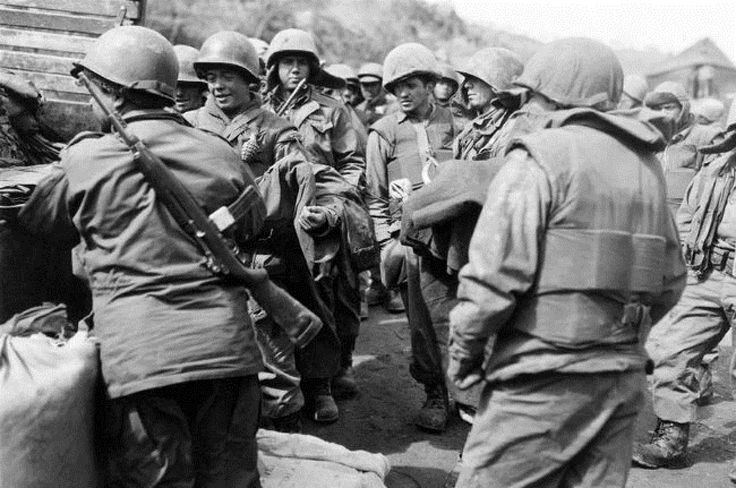
Upon receiving the UN resolution to dispatch troops to Korea, Colombia declared to dispatch one battalion. Colombia first sent naval war vessels and later sent ground troops to Korea on June 16, 1951. Among the UN member nations, these troops were the last to arrive in Korea. Although the scale of Colombian forces was small (a frigate ship and an Army Battalion), it is noteworthy that Colombia was the only country in Latin America that dispatched troops to Korea.
Major Battles
Battle in Advancing to Geumseong (1951. 10. 13~21), Battle of Kimhwa Hill 400 (1952. 6. 21), Battle of Heukuntoryung, Battle of Kumsung, Battle of Bolmo Hill, Battle of Old Baldy (1953. 3. 23~25)
Service Personnel
Roughly 5,100
Denmark
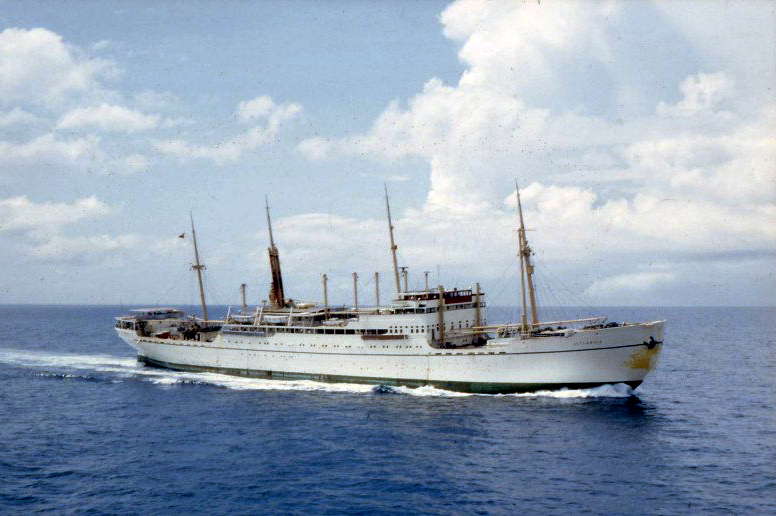
When the UN passed the resolution of military support to Korea, Denmark decided to provide medical support and notified the UN of its decision earlier than any other country. Denmark asked the Red Cross to send a hospital ship, Jutlandia, to Korea. Jutlandia, as an 8,500 ton size hospital ship, was equipped with a surgical dept., internal dept., dental dept. and radiology dept. The unit with 100 personnel consisting of doctors, nurses and other medical staff that was formed under the command of Brigadier General Kai Hammerich departed Denmark on Jan. 23, 1951. After a 45-day voyage, this hospital ship arrived at the Yokohama U.S. naval base. This hospital ship was initially stationed in Pusan and moved to the battle zone frequently to treat patients. It performed medical support in the Incheon Port from the fall of 1952. After arriving in Pusan, it returned to Denmark twice to replace crew members and receive medical supplies. On its return home, the ship stopped in Belgium, Ethiopia, France, Greece, Netherlands, Turkey, and the U.K. to return the war dead, the wounded, and the returned war prisoners to their respective country. This hospital ship returned home on Aug. 16, 1953, after the cease-fire agreement.
Major Battles
Medical Support
Service Personnel
Roughly 250-300
Ethiopia
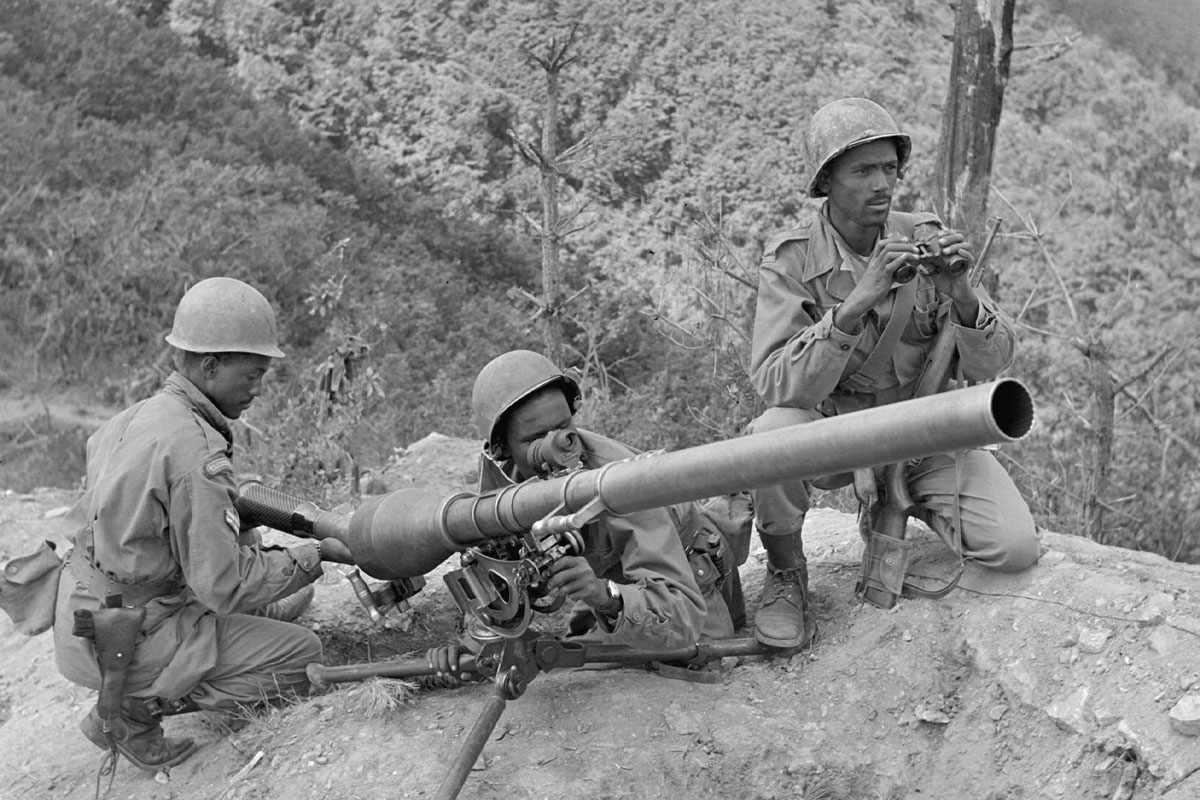
Although Ethiopia was not rich, its leaders decided to follow the UN decision to dispatch troops to Korea. The Ethiopian Battalion arrived in Korea on May 6, 1951. Upon arrival in Korea, the Ethiopian soldiers were armed with US equipment and received eight weeks of adaptation training. Three days after the Ethiopian Battalion was committed to the front, its soldiers experienced their first engagement with the Chinese forces at Bongdangdeokri in the Hwachon area. The battalion won the 4-hour battle, and through the battle, the Ethiopian soldiers came to have confidence in combat.
Major Battles
Battle of Jeokgeun Mt. Samhyun (Hill 700ã 602, 1951. 9. 21~22), Battle of Samgak Hill (Hill 598, 1952. 10. 21~25), Battle of York and Uncle Hill (Northwest of Yeoncheon ; 1953. 5. 19~20)
Service Personnel
3,520
France
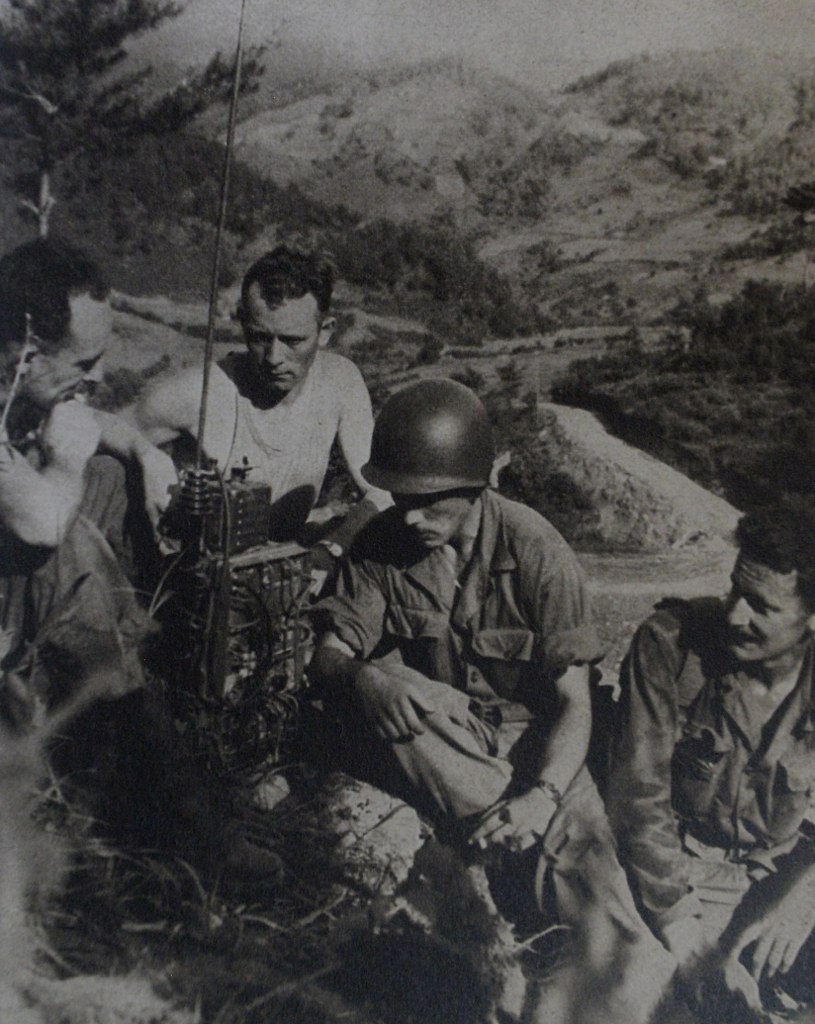
Consisting of 39 officers, 172 non-commissioned officers, and more than 800 enlisted personnel, the French Battalion departed Marseilles on September 25, 1950, arriving in Pusan on November 30, 1950. Once equipped with US weapons and vehicles, the battalion was attached to the 23rd Infantry Regiment of the 2nd US Army Division with whom it served until the end of the hostilities on July 27, 1953. The French Battalion demonstrated its bravery at the Battle of Chipyongri in February 1951.
Major Battles
Battle near Twin Tunnels (25km Northwest of Wonju; 1951. 1. 31~2. 2), Battle of Jipyeong-ri, Battle of Heartbreak Ridge (22km North of Yanggu ; 1951. 9. 13~10. 13, Hill 894-931-851), Battle of Arrowhead Hill (1952. 10. 6~10)
Service Personnel
3,421
Germany

Although not a member of the United Nations at the time, in May 1953, two months before the ceasefire, Germany notified the UN headquarters of its intent to set up a field hospital in South Korea to support UN soldiers participating in the Korean War. While the equipment was still being shipped, the Armistice Agreement was signed in July of 1953. The German Red Cross modified its plans and built a regular hospital instead of a field hospital. The 250-bed hospital in Busan provided 117 medical professionals each year from May 1954 to March 1959. In five years, the German medical staff treated more than 270,000 Koreans, performed 16,350 operations, and helped close to 6,000 expectant mothers give birth. The hospital also established education and training programs for Korean nurses, contributing to the advancement of medicine in South Korea.
Major Battles
Medical Support
Service Personnel
117 medical professionals each year from May 1954 to March 1959
Featured Interviews from Germany
Greece
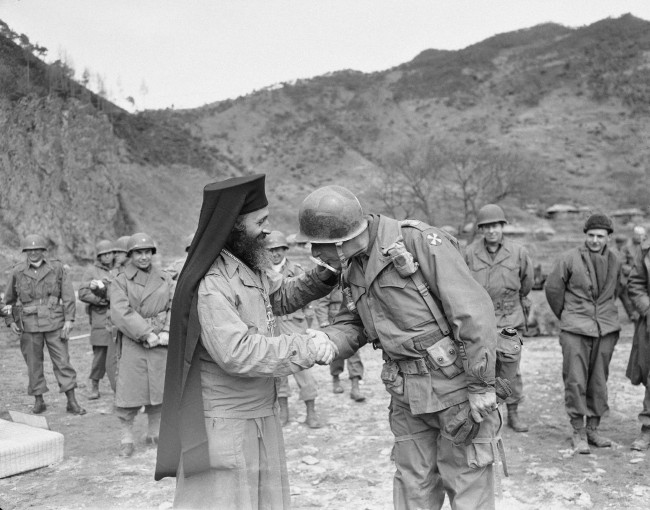
Geographically, Greece was a place of strategic importance connecting Europe and Asia. Greece dispatched 840 infantrymen of the Royal Hellenic Battalion and one transport plane squadron. The battalion arrived in Pusan on December 9, 1950. Once equipped and trained, this battalion was assigned to the 7th Cavalry Regiment of the 1st US Cavalry Division. Greek soldiers demonstrated their combat capabilities when they were defending Hill 381 near Icheon. Later, they performed outstandingly in securing Koyangdae-Daenori Hills near the Imjin River, which were the enemy’s strategic stronghold. The 13th Greek Air Transport Flight (Seven C-47s) supported the battle of the Changjin Reservoir after they arrived in Japan on December 1, 1950. It also supported the US Marines and played an important role in sending back casualties to the rear area.
Major Battles
Battle of Hill 381 in Icheon (1951. 1. 29~30), Battle of Hill 313 in Yeoncheon (Scotch Hill, 15km North of Yeoncheon:1951. 10. 3~5), Battle of Nori Hill (12km West of Yeoncheon; 1952. 9. 29~30), Battle of Bukjeong Pass (10km Northeast of Kimhwa ; 1953. 7. 20~26)
Service Personnel
4,992
Featured Interviews from Greece
India
When the Korean War broke out, India decided to send the 60th Parachute Field Ambulance Platoon, a mobile army surgical hospital(MASH). Commanded by Lieutenant Colonel A. G. Rangaraj, the paratroopers joined UN forces at Pyongyang on December 4, 1950, just in time to take part in the 8th Army’s withdrawal out of North Korea. On December 14, 1950, it formally became a medical evacuation unit for the 27th British Commonwealth Brigade. It supported this unit throughout the war. The Indian medical unit gained the respect of Commonwealth troops for its high-quality medical care and the courage of its soldiers under fire, and it was awarded official commendations from the ROK government several times.
Major Battles
Medical Support
Service Personnel
6,000
Featured Interviews from India
Italy
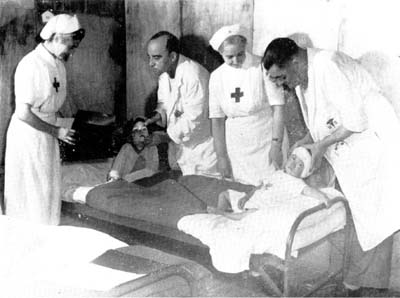
When the Korean War broke out, Italy was one of the NATO member nations but was not a member of the United Nations. At that time, the internal situation of Italy was also very insecure due to frequent changes in the Italian Cabinet. When the Red Cross requested help, Italy decided to send its Italian Red Cross Hospital 68 to Korea. The hospital unit arrived in November 1951. Italy was the last country that sent a medical unit and was also the only non-member state of the United Nations that sent troops to Korea.
Major Battles
Medical Support
Service Personnel
4: 7 doctors, 6 nurses, a Chaplain, and 50 non-commissioned officers
Featured Interviews from Italy
Korea
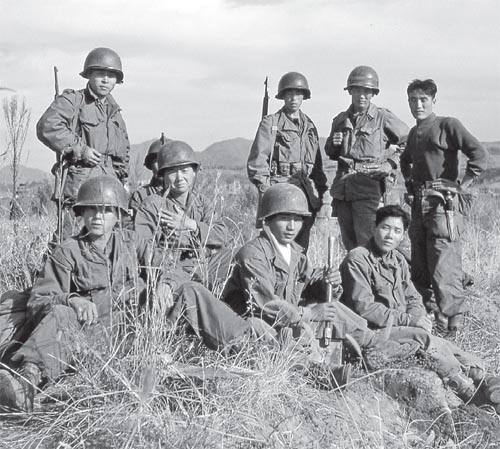
The Korean peninsula was a quagmire following WWII, divided along the 38th Parallel as occupation zones by the US and USSR. The Republic of Korea (South Korea) was invaded on June 25, 1950, by the communist Democratic Peoples’ Republic of Korea (North Korea). North Korea, after the invasion, quickly pushed South Korean forces south to Busan. South Korea, along with the UN forces, pushed out North Korean forces just two and a half months later. They pushed the communists not just out of the South, but to the Yalu River. After Chinese intervention, a fixed-front developed along the original dividing line of the 38th Parallel. Millions of civilians were caught in the chaos of the Civil War and lost their lives. Roughly 600,000 South Koreans served during the Korean War. An Armistice was signed on July 27, 1953, preserving what became one of the leading democratic countries in the world today. The economy of South Korea today vastly betters that of North Korea by every measurement.
Luxembourg
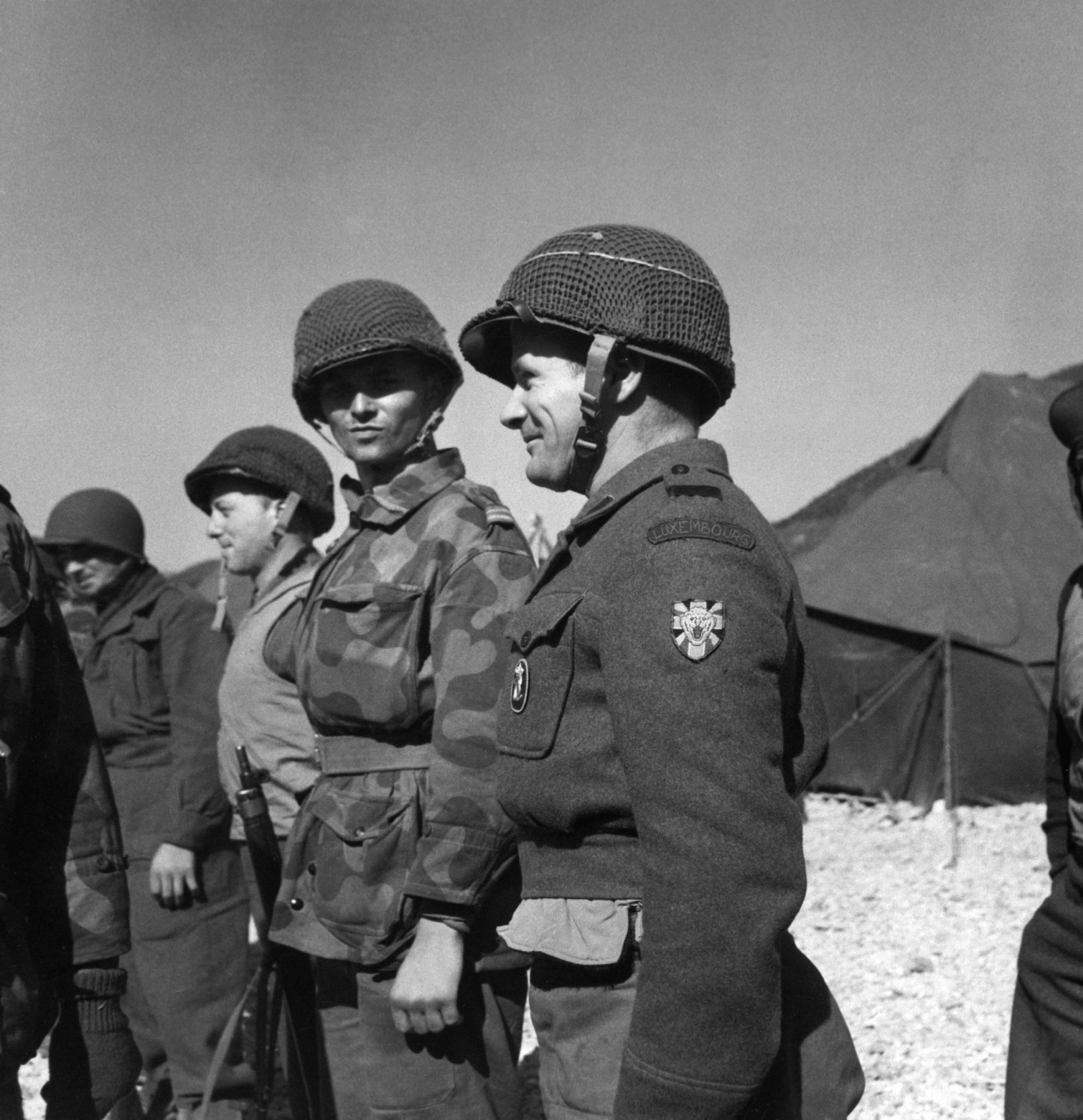
The proposal of Luxembourg government’s military assistance to Korea was approved unanimously in the Luxembourg Congress. Luxembourg was a member nation of the UN Commission in Korea. In early 1950, other UNC member nations sent only one officer, but Luxembourg sent two officers which were on the UNC Military Investigation Team. When the 3rd Battalion of Royal Luxembourg Regiment(RAR) arrived in Korea on September 27, 1950, the North Korean advance had been halted, and NK forces were retreating to the North. Upon arrival in Korea, the 3rd Battalion(RAR) immediately joined the northward advance operations of the UN forces. At the Battle of Sariwon, they defeated NK troops who were withdrawing from the area with hand-to-hand fighting.
Major Battles
Battle of Youngyuri, Battle of Pakchon, Battle of Kapyong, and Battle of Mt. Maryang
Service Personnel
110
Featured Interviews from Luxembourg
Netherlands
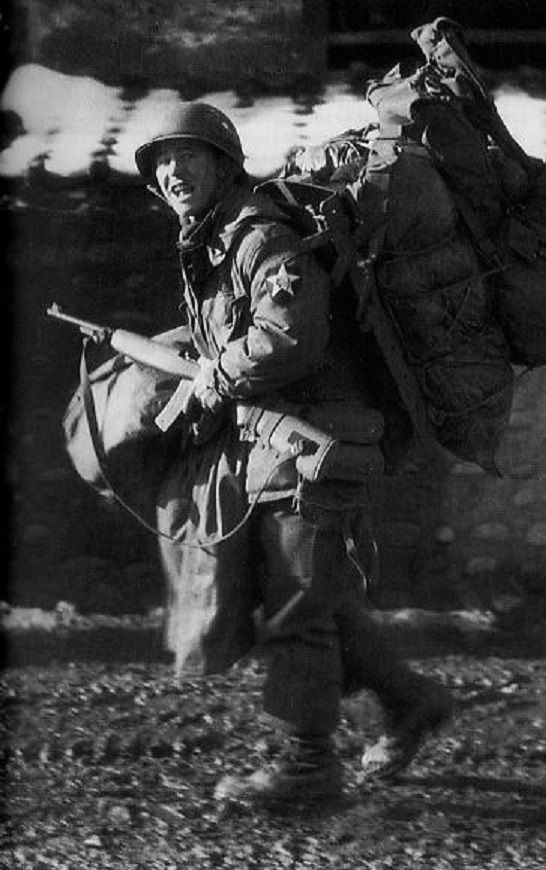
The Dutch Battalion was well-trained and had a strong sense of responsibility. Many of the soldiers could speak English, so they had no difficulty communicating with US troops. The Dutch Battalion arrived in Korea on October 24, 1950, and finished adaptation training by the end of December 1950. The battalion was then assigned to the US 2nd Division and took part in fierce battles in the central forward area. Particularly important was the battalion’s engagement with the NK 5th Army at the battle of Wonju. At this battle, the Dutch soldiers killed or captured 1,100 North Korean troops. It was an astonishing military achievement.
Major Battles
Battle of Hoengseong (1951 2. 12~13), Battle of Inje (1951. 5. 30~31), Battle of Daewoo Mt. (1951. 7. 15~31), Battle of Byul Hill (10km South of Pyonggang ; 1952. 2. 18)
Service Personnel
4,748
Featured Interviews from Netherlands
New Zealand

When the Korean War broke out, New Zealand, a member nation of the British Commonwealth, agreed to send war vessels according to the UN Security Council Resolution. Two RN LOCH-class frigates sailed for Korea on July 3, 1950, and arrived in Korea on July 30, 1950. Upon arrival in Korea, New Zealand troops supported the UN naval operations, and later, eight New Zealand war vessels took turns participating in the War until the truce agreement was signed. On July 26, 1950, the New Zealand government announced it would raise a volunteer military force to serve with the UN forces in Korea. Known as Kayforce, a total of 1,044 men were selected from volunteers. Kayforce arrived in Pusan on December 31, 1950. Initially attached to the 27th Commonwealth Brigade, Kayforce went into action on January 29, 1951. In July 1951, Kayforce became part of the newly formed Commonwealth Division. The New Zealand government also dispatched marines and made a contribution to the UN operations.
Major Battles
Counteroffensive Operation Support (1951. 2. 21~4. 18), Gapyung Battle Support (1951. 4. 23~25), Commando Operation Support (1951. 10. 3~8), Gowang Mt. Battle Support (1951. 10. 23), Hook Hill Battle Support (1953. 5. 2~28)
Service Personnel
1056
Featured Interviews from New Zealand
Norway
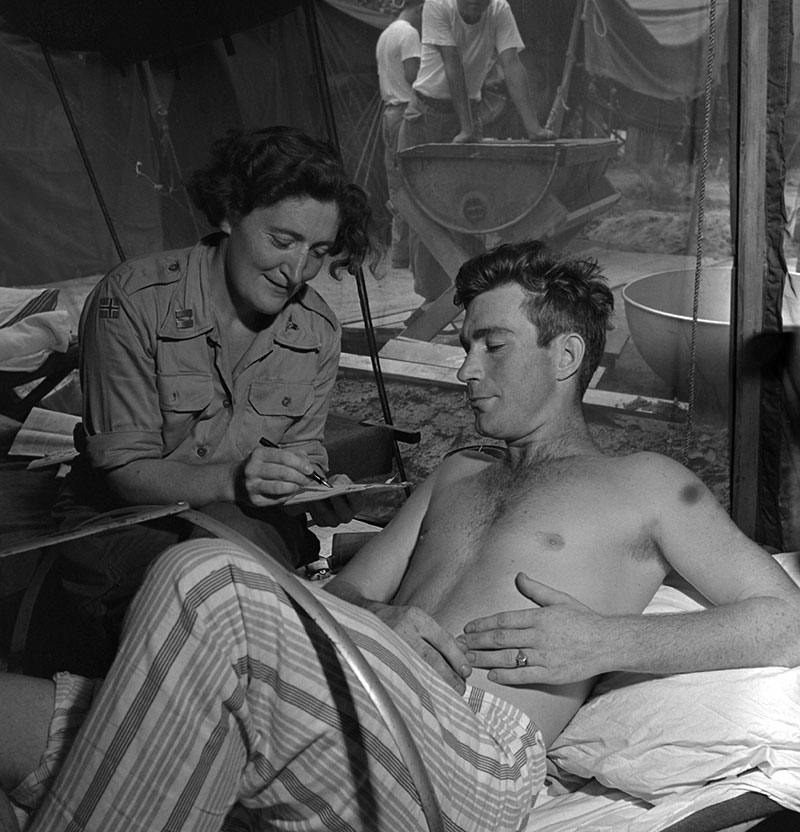
When the United Nations asked its member nations to assist South Korea, the Norwegian government decided to send the 1st Norwegian Army Surgical Hospital, known as NORMASH. The Surgical Hospital departed Norway on May 31, 1951, and upon arrival, in Korea the unit supported the US 1st Corps in Dongducheon. During its stay, the medical staff of the unit performed over 9,000 operations and treated approximately 90,000 personnel.
Major Battles
Medical Support
Service Personnel
189
Featured Interviews from Norway
Philipines
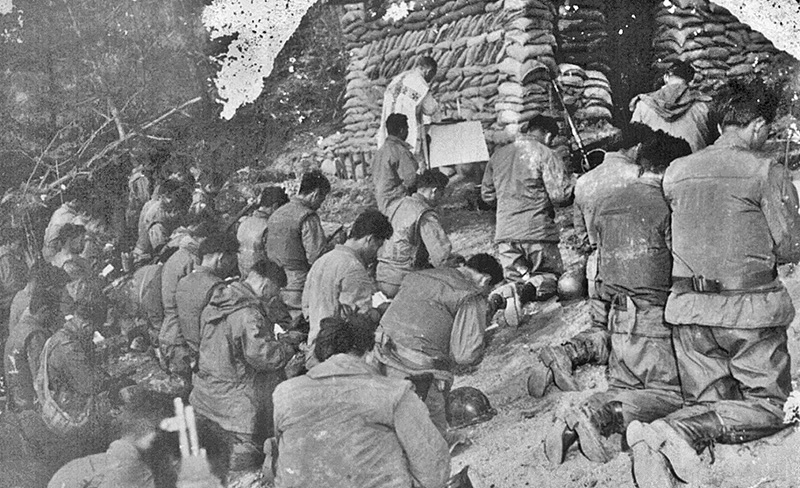
Filipino General Carlos Romulo, who was the president of the UN General Assembly from 1949 to 1950, staunchly advocated the international defense of South Korea. On September 7, 1950, the Philippine government responded with the approval by the Philippine Congress of Republic Act 573, the Philippine Military Aid to the UN Act, making possible the sending of a Filipino expeditionary force to South Korea to help repel the communist aggression. On September 19, 1950, the first of five Battalion Combat Teams from the Philippine Army landed in Busan. The Philippine contingent, despite having to adapt to the Korean winter, fought bravely and took part in decisive battles such as in Yultong and Hill Eerie. Not one PEFTOK battalion was overrun or made incapable of combat as a result of enemy action despite many hard-fought battles. PEFTOK fought successfully against its main enemy in scores of actions in hills, cities, and towns along the 38th Parallel. The Philippines was unique among UN combatants in that it was the only one with an active communist insurgency and the only one whose soldiers had immediate combat experience. This combat experience was invaluable in keeping casualties low and in PEFTOK accomplishing the missions assigned to it.
Major Battles
Gaesung-Pyongyang Main Supply Road Guarding Operation (1950. 11. 1~27), Battle of Yuldong (5km North of Yeoncheon; 1951. 4. 22~23), Arsenal and Iri Hill Skirmish (20km North of Yeoncheon; 1952. 5. 18~6. 21), Battle of Baekseok Mt. - Christmas Hill (1953. 7. 15~18)
Service Personnel
7,420
Featured Interviews from Philipines
South Africa

When the Korean War broke out, the South African government issued a statement in support of the UN Security Council Resolution on July 1, 1950. In matters of supporting methods, it discussed the matters with the US, secured approval of its plan of support from the Congress, and finally decided to dispatch a fighter squadron. The squadron departed Durban on September 4, 1950, and arrived in Yokohama, Japan, on November 5, 1950. The role of South African 2nd Fighter Squadron was mainly aviation support and interdiction missions as one of the squadrons making up the USAFs 18th Fighter Bomber Wing. For their mission, pilots used 16 F-51D Mustangs supplied by the US. The South African forces successfully carried out their interdiction mission by bombing railroads, bridges, tunnels, and railway switchyards all over North Korea.
Major Battles
U.N. Forces' Christmas Full Scale Offensive Operation Support (1950. 11. 2~12. 2), Strangle Operation (1951. 8. 18~12. 31), Saturate Operation (1952. 2. 25~6. 15), Pressure Operation (1952. 6. 23~8. 31)
Service Personnel
206: 49 South African Air Force officers and 157 non-commissioned officers
Featured Interviews from South Africa
Sweden
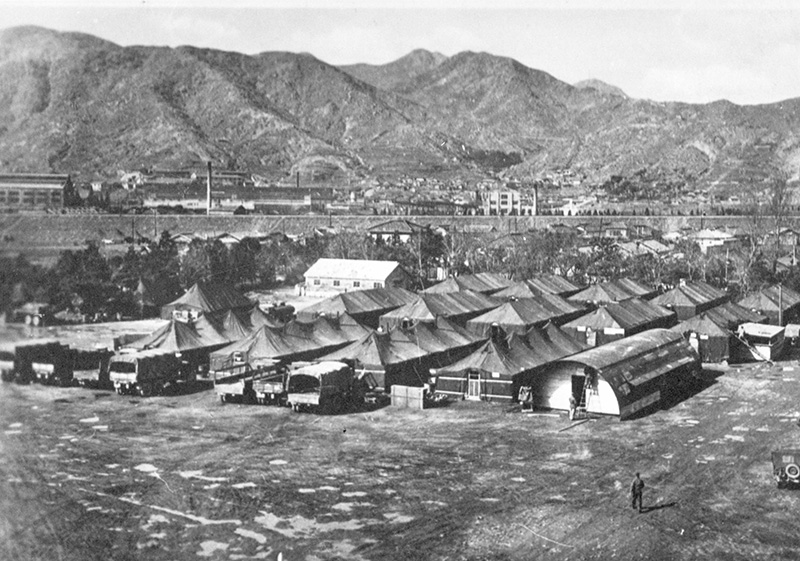
Sweden used to hold the policy of neutrality. When the Korean War broke out, however, the Swedish government decided to dispatch a mobile field hospital unit. The field hospital unit left Stockholm on July 28, 1950, and arrived in Pusan on September 23, 1950. The Swedish medical unit supported Korea for six and a half years until it withdrew in April 1957. During the war, a total of 1,124 Swedish men and women served at the hospital in Pusan. The unit stayed longer than any other army in the UN forces and provided invaluable medical assistance.
Major Battles
Medical Support
Service Personnel
1,124
Featured Interviews from Sweden
Thailand
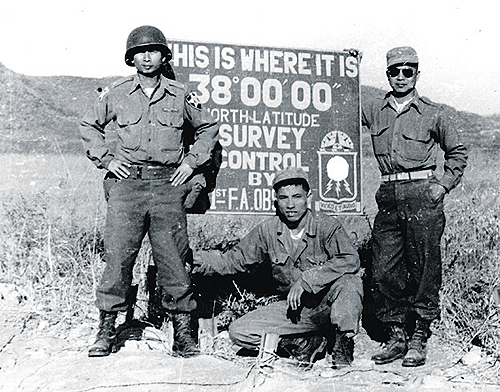
Thailand was the first to assist Korea among Asian countries. On June 30, 1950, five days after the war broke out, it demonstrated its will to support the UN resolution by sending four tons of rice. The UN Secretary General praised Thailand for its support, saying that the UN extended its gratitude for the Thai government’s support for the UN resolution and its decision to send food to Korea. Thai military forces later sent a battalion-size unit of 1,000 soldiers. Besides this battalion unit, Thailand also sent 2 frigates, and the C-47 transport aircraft belonging to Royal Thailand Air Force for the support of naval and air operations.
Major Battles
Yeoncheon Area Defense (1951. 7. 31~ 9. 7), Battle of Pork Chop Hill (Hill 234, 20km Northwest of Yeoncheon; 1952. 11. 1~11), Battle of Kimhwa Hill 351 (10km Northwest of Kimhwa; 1953. 7. 14~27)
Service Personnel
11,786
Featured Interviews from Thailand
Turkey
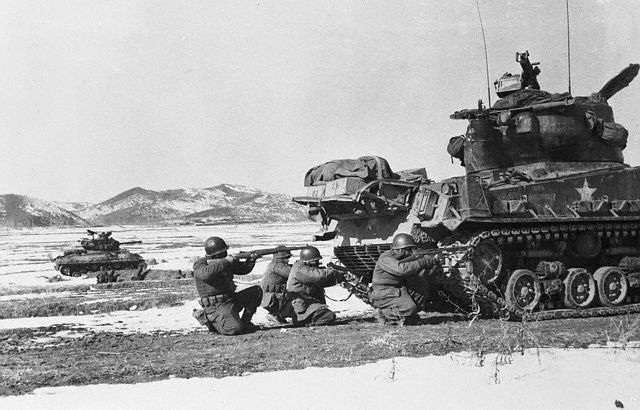
By the end of World War II, Turkey took on a pro-west political policy, and, right after the outbreak of the Korean War, it wholeheartedly supported the UN resolution of military support for Korea. Turkey took immediate measures to dispatch more than 4,500 troops to Korea. The Turkish Brigade that was dispatched to Korea was mainly the Turkish Army units, and included in the brigade, were such branches as infantry, engineering, transportation, medical corps, and ordnance. Whenever the Turks were engaged in battles, they demonstrated solidarity and strong will to fight in the battles.
Major Battles
Battle of Kunwu-ri (80km North of Pyongyang; 1950. 11. 26), Battle of Kimrayngjang & Hill 151(20km East of Suwon; 1951. 1. 25~27), Battle of Jangseungcheon (5km Northeast of Yeoncheon; 1951. 4. 22~23), Battle of Nevada Outpost (10km Northwest of Gorangpo; 1953. 5. 28), Gunwuri Battle, Kunuri Battle, Operation Wolfhound and Operation Thunderbolt
Service Personnel
Roughly 15,000
Featured Interviews from Turkey
United Kindom

The United Kingdom (UK) dispatched the second largest number of troops to Korea. The British Army first sent the 27th Brigade which was activated with two battalions from Hong Kong and other supporting units. Upon arrival in Korea, the brigade was immediately committed to the Battle of the Nakdong Bulge. On June 29, 1950, the UK Navy sent one aircraft carrier, two cruisers, two destroyers, and three frigates, and helped the US naval operations on the East Sea. An estimated total of about 17,000 Navy soldiers of the UK participated in the Korean War, and 50 British warships took turns to carryout naval operations until the end of the war.
Major Battles
Battle of Jeongju (1950. 10. 29~30), Battle of Bakcheon (1950. 11. 4~6), Battle of Goyang (10km Northwest of Euijeongbu; 1951. 1. 2~3), Battle of Jeokseong (1951. 4. 22~25), Battle of Gapyung (1951. 4. 23~25)
Service Personnel
More than 90,000
Featured Interviews from United Kindom
United States

The military forces of the US were several times bigger than those of the other UN member nations combined, both in the number of troops and in combat power. The US Army sent 9 divisions and numerous supporting units. During the three years of the Korean War, the US deployed 300,000 troops at its peak. In 1952 when the number of the UN forces reached the highest, 50% of the ground troops were the ROK forces, 40% were the US forces, and 10% were the forces of other UN member nations. Most of the military operations executed during the war were carried out by the US military forces. The US Navy also played an important role in turning the war in the allies’ favor with such diverse military activities as air strikes, bombardment with naval guns, transporting troops and other supplies from the US. The US Air Force operated air strikes to drain up the battle capabilities of the communist forces, and executed close air support operations to help the UN ground troops. The US Air Force inflicted heavy losses on North Korean and Chinese forces throughout the war.
Major Battles
Battle of Osan (1950. 7. 5), Battle of Daejeon (1950. 7. 18~20), Battle of Youngsan (1950. 8. 6~19, also known as the Nakdong River Perimeter Battle), Incheon Landing Operation (1950. 9. 15), Pyongyang Recapturing Operation (1950. 10. 9~19), Battle of Kunwu-ri (1950. 11. 26~12. 1), Battle of Lake Jangjin (1950. 11. 27~12. 11), Battle of Jipyeong-ri (30km Northwest of Wonju; 1951. 2. 13~16), Battle of Bunker Hill (North of Hongcheon, 1951. 5. 16~19), Battle of Old Baldy (Northwest of Yeoncheon ;1952. 6. 6~29), Heungnam Withdrawal Operation
Service Personnel
1,789,000


























































